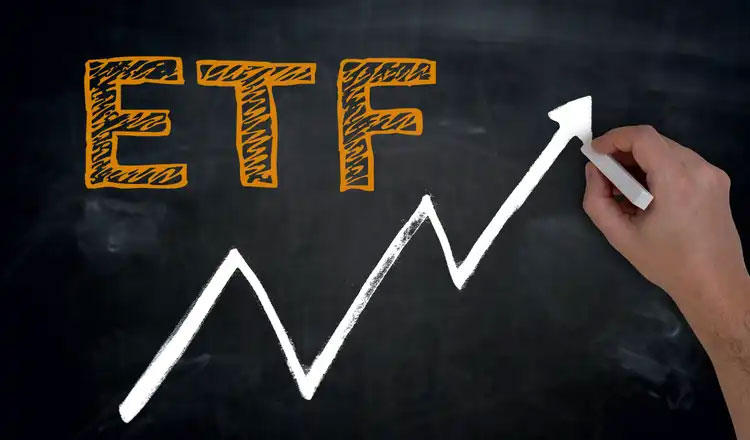What are Inverse ETFs
Dec 23, 2023 By Triston Martin
Have you heard much about inverse ETFs lately but don’t know what they are or how they work? If so, you’re not alone. Many investors are still learning the basics of this relatively new product and deciding whether investing in an inverse ETF is right for them. We will provide a comprehensive overview of inverse ETFs – from their definition to their pros and cons – so you can invest confidently.
Inverse ETF and how it works

An inverse ETF (also known as an “inverse fund”) is a type of exchange-traded fund (ETF) that seeks to provide investors with the opposite return of a specific benchmark or index. For example, if the underlying index rises in value by 10%, the inverse ETF would fall in value by 10%. Inverse ETFs are designed to allow investors to benefit when the underlying index declines in value, providing an opportunity for traders and investors to gain exposure and profits from downward market trends.
Inverse ETFs typically use derivatives such as options and futures contracts to create the inverse return of the benchmark or index. This means that they often have higher expenses than traditional ETFs since these derivative instruments require additional trading costs.
Types of Inverse ETFs

Inverse ETFs come in many varieties, each designed to track a different index or benchmark. Some popular inverse ETFs include:
-Short Dow 30 (SDOW): Tracks the opposite performance of the Dow Jones Industrial Average
-Short S&P 500 (SH): Tracks the opposite performance of the S&P 500 Index
-Short Nasdaq 100 (SQQQ): Tracks the opposite performance of the Nasdaq 100 Index
-UltraPro Short QQQ (SQQQ): Leveraged inverse ETF that seeks to provide three times the inverse exposure of the Nasdaq 100 Index and is for aggressive investors only.
These are just a few examples of available inverse ETFs, but there are many more.
Advantages of Investing in Inverse ETFs
Inverse ETFs offer several advantages to investors.
- Low Cost: Inverse ETFs are generally cheaper than traditional investments, with lower management fees and transaction costs.
- Flexibility: Inverse ETFs can be easily traded anytime during the day on a public exchange like the NYSE or NASDAQ, allowing investors to capitalize quickly on market opportunities.
- Leverage: Certain inverse ETFs offer leveraged exposure and the potential for increased profits from smaller movements in the underlying index or benchmark.
- Diversification Benefits: By investing in an inverse ETF, investors can gain diversified exposure to different markets, which helps reduce risk by spreading out investments across several sectors or industries.
- Lower Taxes: Inverse ETFs have the potential to generate lower taxes than traditional investments since they tend to have smaller capital gains distributions.
- Hedging Opportunities: Inverse ETFs can be used as a hedge against a long underlying asset or index position, providing investors with downside protection in a market downturn.
- Short-Selling Alternatives: Inverse ETFs provide an alternative for traders who want to short-sell without borrowing stock from another investor or paying margin interest costs.
- Liquidity: Inverse ETFs are highly liquid investments, allowing investors to exit positions when needed easily.
Inverse ETFs can be an attractive option for investors who want to hedge their portfolios against a market downturn or capitalize on short-term opportunities.
Disadvantages of Investing in Inverse ETFs
Despite their advantages, inverse ETFs also have some drawbacks that investors should consider before investing.
- High Risk: Inverse ETFs are generally considered high-risk investments and unsuitable for conservative or beginner investors.
- Leverage Risk: Certain inverse ETFs offer leveraged exposure, meaning that the potential loss on an investment can be much greater than the amount initially invested.
- Tracking Error Risk: Inverse ETFs may have tracking errors when compared to their underlying index or benchmark. This is because inverse ETFs use derivatives to achieve their return objective, and derivatives prices may not necessarily align with the underlying asset or index.
- Volatility Risk: Inverse ETFs tend to be more volatile than traditional investments, leading to larger losses if market conditions shift quickly.
- Expense Ratio: Inverse ETFs usually have higher expense ratios than traditional investments, so it’s important to factor in this cost when considering whether or not an inverse ETF is right for you.
- Tax Implications: Inverse ETFs may have significant tax implications for investors since capital gains distributions are more frequent and taxed differently than traditional investments.
Inverse ETFs can be a great way for investors to gain exposure and profits from downward market trends; however, they are generally considered high-risk investments and should only be considered by experienced traders and investors who understand the risks involved. It’s also important to do your research before investing in any inverse ETF and ensure you fully understand how it works and any associated fees or costs.
Considerations When Investing in Inverse ETFs
Understanding inverse ETFs' purpose and how they work before investing in them is important. Here are some key considerations to keep in mind:
- What is the target market or asset that you want to achieve inverse exposure to?
- What type of risk profile does an inverse ETF have, such as short-term vs. long-term?
- What fees or costs are associated with the investment?
- What other investments could be used for hedging purposes instead of an inverse ETF?
By researching and understanding all of these factors, you can make an informed decision about whether or not investing in an inverse ETF is right for you.
How to Monitor Inverse ETF Performance
Once you’ve decided to invest in an inverse ETF, monitoring its performance regularly is important. You should pay close attention to the underlying index or benchmark and be aware of any sudden or unexpected movements in the market that may affect your investment.
You should also review the fund’s expense ratio regularly to ensure it is still reasonable for the type of exposure you seek. Conclusion Inverse ETFs can be powerful tools for investors looking to hedge their portfolios against downward market trends or gain leveraged exposure to different markets.
However, they come with their own unique set of risks and considerations that must be taken into account before investing. By doing your own research and understanding how inverse ETFs work, you can make an informed decision about whether or not they are right for you.
FAQS
What is an ETF vs. an inverse ETF?
An ETF (Exchange Traded Fund) is a type of investment that tracks an index, sector or basket of assets. An inverse ETF is an ETF that seeks to achieve the opposite return of its underlying index or benchmark.
Do all inverse ETFs go to zero?
No, not all inverse ETFs will go to zero. The performance of an inverse ETF is linked to the underlying index or benchmark that it tracks, so its performance will depend on the underlying asset's market conditions.
Why were inverse etfs made?
Inverse ETFs were created to provide investors with a way to hedge their portfolios against downward market trends and to gain leveraged exposure to different markets. Investing in an inverse ETF, investors can potentially profit from falling prices while minimizing risk.
Conclusion
Inverse ETFs are a great option for investors looking to get into the stock market but want to make sure they are fully informed about what they are getting into and how it works. Inverse ETFs can be used to hedge against market risk or capitalize on short-term opportunities to increase returns in a portfolio. Although investing in inverse ETFs may appear intimidating, understanding the basics of what they are and how they work is vital for successfully utilizing these products. It is important to note that successfully investing in inverse ETFs requires greater knowledge than simply buying and selling stocks, so it is important to do your research beforehand.

Dec 04, 2023 Triston Martin

Jan 24, 2024 Susan Kelly

Oct 06, 2023 Triston Martin

Nov 16, 2023 Susan Kelly

Oct 13, 2023 Susan Kelly

Jan 02, 2024 Triston Martin